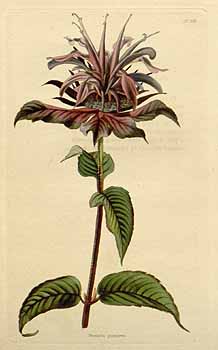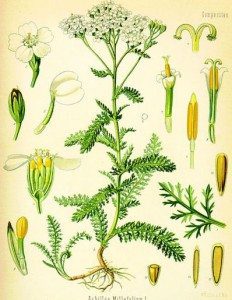The interest in harnessing all the health benefits of homegrown herbs grows as you learn more about the incredible natural elements they have. Why not put together a home apothecary? Of course, stopping with just common herbs makes no sense, since so many plants have been used to protect and restore a person’s health and well being through the centuries. Those beneficial elements are used in many products we purchase today, whether they are herbal or mainstream concoctions. Just what can you accomplish with herbal wellness without trotting out and buying some pricey preparation?
I recently got curious about this. Wondering what a well stocked home apothecary should contain, and how these stores would be useful for maintaining health, or soothing and relieving common ailments. No eye of newt stuff, mind you, but those known to have curable powers today can be good to have on hand in dried, or elixir form. What kind of plants do you need to grow or harvest? Some of them might grow wild locally, while others are candidates for the herb garden, even popular flower garden residents. But I suspected that some of the important items in an herbal apothecary might not be possible to grow or gather in my climate. Time enough to figure that out after compiling The List.
 First, there’s the aromatics, which are popular in herb gardens for the kitchen, but the volatile oils also give them health benefits. This would be the leaves, and perhaps essential oil or tinctures of:
First, there’s the aromatics, which are popular in herb gardens for the kitchen, but the volatile oils also give them health benefits. This would be the leaves, and perhaps essential oil or tinctures of:
- Thyme
- Rosemary
- Oregano
- Peppermint
- Sage
- Lavender
- Lemon Balm
- Catnip
- Bee Balm
Those last two in the mint group aren’t used in seasoning foods, but Bee Balm (Monarda) is often used in butterfly gardens and perennial gardens. These 8 plants alone put a lot of soothing and healing power in your home apothecary. The Herbal Academy of New England compiled a great compact list of their benefits, which is quoted below:
- Nervine for nervous system complaints (anxiety, depression, headaches, insomnia, dementia)
- Digestive for digestive system complaints: (indigestion, gas, cramps, nausea, colic)
- Antimicrobial for infections: (bacterial, viral, fungal)
- Clearing for respiratory system complaints (infection, congestion, asthma)
 Of course, the well-planned herb garden includes non-edible staple plants like these listed below, though rose petals are edible, only the hips have curative benefits:
Of course, the well-planned herb garden includes non-edible staple plants like these listed below, though rose petals are edible, only the hips have curative benefits:
- Echinacea
- Chamomile
- St. John’s Wort
- Comfrey
- Calendula (Pot Marigold)
- Rose Hips
- White Yarrow
- Althea (Marsh Mallow)
Next, there is a group of essential medicinal plants that many of us could grow, or find in woods or weeds not far from home. Some of them have been used for healing since the days of ancient Egypt. With these, it might be only the roots that are beneficial or several parts of the plant.
- Aloe Vera
- Chinese Yam
- Siberian Ginseng
- Great Burdock
- Great Yellow Gentian
- Gotu Kola
- Dandelion
- Chickweed
 Shepherd’s Purse
Shepherd’s Purse- Wild Mallows
- Cleavers
- Unsea
- Groundsel
- Self-Heal
Naturally, there are more natural sources of wellness, but this is a blog post, not a book. Those mentioned here will definitely give you a great start at putting together your home apothecary, and you can add others you discover as you learn more about natural remedies. So, what kind of preparations and healing benefits do those last 2 groups of plants have? A lot! You can learn more about putting the roots, leaves, flowers, or stems of those to use by following the first 2 links below. The third one adds even more things to gather or make sure you have on hand.
More Info:
 Shepherd’s Purse
Shepherd’s Purse